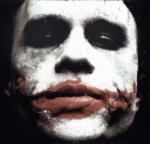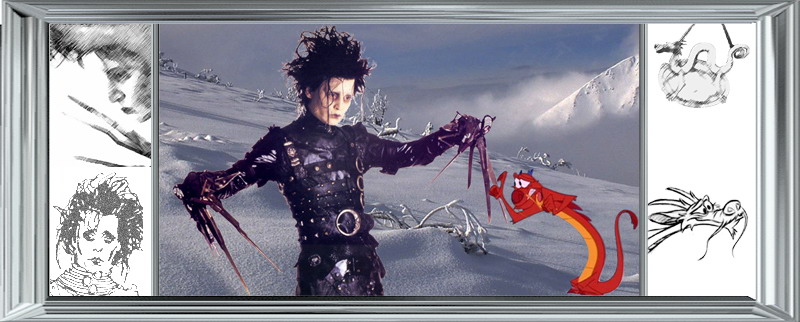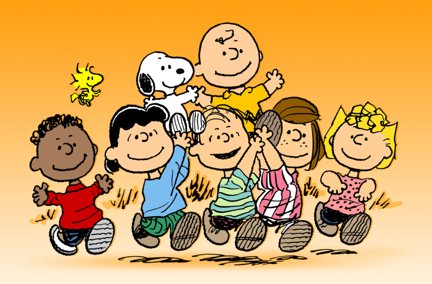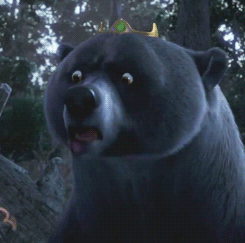Benvenuto Visitatore ( Log In | Registrati )
  |
 2/7/2013, 11:48 2/7/2013, 11:48
Messaggio
#1
|
|
 Gold Member        Gruppo: Moderatore Messaggi: 7.317 Thanks: * Iscritto il: 18/12/2006 Da: Campobasso/Angers |
Ebbene si... zitto zitto è uscito e pare sia ben fatto!
http://variety.com/2013/legit/reviews/legi...ook-1200503587/ Vibrant music and an enriched script bring verve to new musical adaptation Steven Oxman RELATED STORIES FILM 01:23 PM Disney Extends Bob Iger’s Deal Through 2016 FILM 12:08 PM Kevin Costner Running with Disney’s ‘McFarland’ FILM 01:12 PM Consumers to Play Cowboys and Indians with ‘Lone Ranger’ TV 11:39 AM Premiere Date Set for Disney, Marvel Crossover ‘Phineas and Ferb: Mission Marvel’ With a history of infusing classic tales with fresh theatricality, auteur-director Mary Zimmerman (“Metamorphoses”) is both a natural choice to adapt a Disney film to the stage and a nearly impossible one. Her writing process, accomplished collaboratively in rehearsals, is always unpredictable and thus risky. So “The Jungle Book” reps a “special arrangement” between Disney and Chicago’s Goodman Theater: Disney Theatrical isn’t producing and thus cedes control, but also makes no promises about future life. The union results in a colorful, musically vibrant, family-friendly show, surprisingly faithful to the film but with a superb, enriched book that’s recognizable as both Disney and Zimmerman. While set in the jungle, this is no “Lion King”: The show is lovely but not a transcendent spectacle. It’s also not the acrobatically bouncy but unrefined “Tarzan.” Zimmerman’s touch is elegant and delicate, bringing out some of Kipling’s original story content to enrich the characters with material that is particularly attuned to his verse. GET DISNEY NEWS AND ALERTS FREE TO YOUR INBOX Learn More >> The animal figures remain upright and fully human, depicting their species not with masks or puppetry (except for the minimal exception of the snake Kaa), but with costumes that focus on a single key feature and with symbolic hand gestures based on classical Indian dance. While Mara Blumenfeld’s costumes are minimalized for the hard-working ensemble — who portray wolves (big tails), elephants (big ears, English military uniforms), monkeys (furry heads) and vultures (a shabby white collar and top hats) — many of the lead characters wear elaborately beautiful robes. The panther Bagheera, played with just the right balance of sympathy and impatience by Usman Ally, is dressed in black with a long tail, and darts in from the wings with cat-like quickness, but also simply stands and speaks. Zimmerman understands how less can be more, or at least how less can be less distracting from where she wants our focus to be. Even Daniel Ostling’s set, made up of frequently re-arranged walls with oversized and stylized flowers and birds, has both boldness and practical simplicity. The simplest costume of all belongs to the bear Baloo, who wears a set of concentric circles suggesting a bear shape. Actor Kevin Carolan gives a likeable but not particularly imaginative performance, capably delivering the best known and cheeriest of the songs, “Bare Necessities.” It seems as if Zimmerman made a choice to keep Baloo as faithful to the film as possible — he isn’t granted the same added backstory as Bagheera or the tiger Shere Khan (Larry Yando). That tiger takes on added significance as the innocent tone of Act I darkens considerably in Act II. Zimmerman’s shows never portray pure villainy — she has too complex a view of the world. On the one hand, she shows us Shere Khan killing a deer, the clearest nod to the violence of the jungle and the darkest moment of the piece. On the other, she gives Shere Khan an extraordinary death scene, without question the most unique and original moment of the show. While the fire that burns him isn’t quite yet realized theatrically (audiences may not understand what’s happening without previous knowledge), the character’s transition from life to death is pure Zimmerman — spiritual in its combination of the sad and hopeful. The proceedings benefit, too, from the infusion of just the right amount of Indian influence. There’s room for criticism and improvement, but overall Zimmerman has a sure hand in mixing it with the British colonialism of Kipling and the Disney-fication of Mowgli’s story, with flourishes most evident in Christopher Gattelli’s jubilant choreography and most of all in the music. If there is a true breakout star in this show, it’s music director and arranger Doug Peck. Peck is omnipresent on the Chicago scene but not well known beyond it; here, he marries songs based on American forms such as jazz and blues with Indian instrumentality, and does it brilliantly. All of this comes together to put the audience on true highs, particularly at the end of Act I with the number “I Wanna Be Like You.” Andre De Shields plays the monkey King Louie with incomparable showmanship; Gattelli’s choreography is rich and buoyant; and Peck’s arrangements bring layers of additional interest and verve. The finale, a song from the direct-to-DVD “Jungle Book 2” called “Jungle Rhythm,” also ensures that the audience leaves happy. Zimmerman continues to work on her projects over a long period of time, but here she has established a mature, advanced initial start. The portrayals of some of the animals, particularly their sounds, need work; the howling of the wolves and Baloo’s roar were the only times that children’s theater came to mind. And Act I currently feels more fully realized than Act II. But there is an artistic refinement throughout. Zimmerman embraces the Disney film enough to please fans while also hewing to the traditional form of American musical comedy, finding the right rhythms of book to song. In doing so, she changes the right elements (e.g., the vultures are no longer based on the Beatles), keeps the right ones (the memorable songs from the film), and adds the right ones (poetry, cultural layers, deepened characters) to make the piece richer without sacrificing its charm. Musical numbers: Act I: “Hunting Song of the Seeonee Wolf Pack,” “Kalaweeta Kiliana,” “Time Passes,” “Colonel Hathi’s March,” “Colonel Hathi’s March” (reprise), “The Bare Necessities,” “I Wanna Be Like You.” Act II: “Baloo’s Blues,” “Road Song of the Bandar-Log,” “Colonel Hathi’s March” (reprise), “Your Unexpected Friend,” “Trust in Me,” “That’s What Friends Are For,” “My Own Home,” “Jungle Rhythm” (Finale).   thanks to giagia |
|
|
|
 2/7/2013, 14:39 2/7/2013, 14:39
Messaggio
#2
|
|
 Gold Member        Gruppo: Utente Messaggi: 8.198 Thanks: * Iscritto il: 4/6/2012 Da: Palermo |
Fatemi capire bene; a parte "Jungle Rhytm", i brani non appartenenti al Classico sono tutte canzoni tagliate dal film o qualcuna di loro è stata composta appositamente ?
   Grazie Simba !  |
|
|
|
   |
1 utenti stanno leggendo questa discussione (1 visitatori e 0 utenti anonimi)
0 utenti:

|
Versione Lo-Fi | Oggi è il: 19/4/2024, 0:39 |

 Facebook
Facebook











